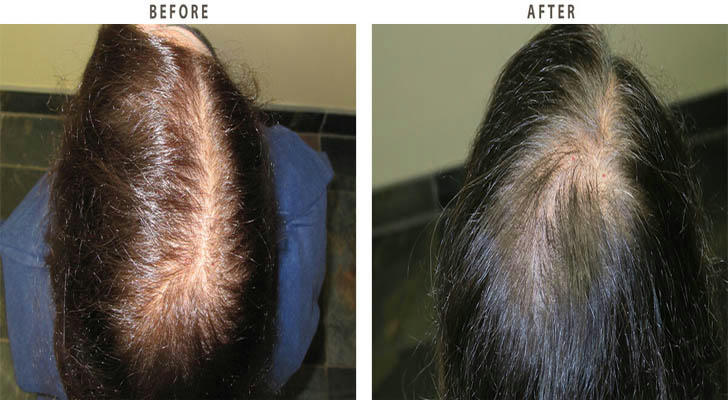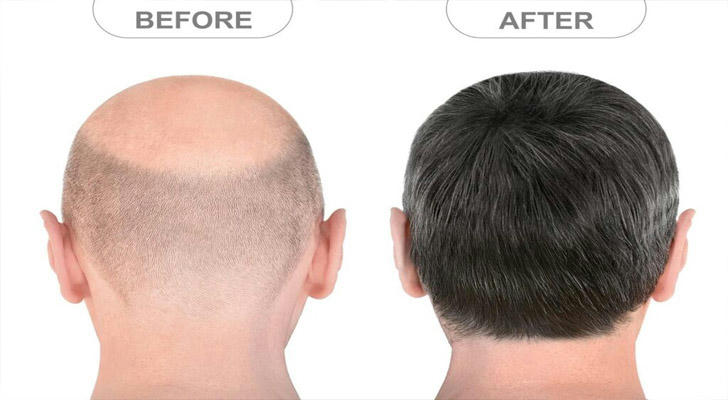Hair Transplants: A Modern Solution to Hair Loss
Hair loss affects millions of people around the world, with the American Hair Loss Association estimating that two-thirds of men will experience some degree of hair loss by the age of 35, and by the age of 50, approximately 85% of men will have significantly thinning hair. Women also face hair thinning, with around 40% of women experiencing noticeable hair loss at some point in their lives. While hair loss can have various causes, including genetics, aging, and medical conditions, it can impact self-esteem and confidence. Fortunately, advancements in hair restoration technology, particularly hair transplants, offer a permanent solution for many individuals seeking to regain their hairline and improve their appearance.

What Is a Hair Transplant?
A hair transplant is a surgical procedure in which hair follicles from one part of the body (usually the back or sides of the scalp, where hair is more resistant to thinning) are removed and transplanted to areas where hair is thinning or has completely fallen out. There are two primary methods of hair transplantation:
Follicular Unit Transplantation (FUT): In this method, a strip of skin with hair follicles is surgically removed from the donor area, and individual follicular units are dissected and implanted into the thinning or balding area.
Follicular Unit Extraction (FUE): FUE involves extracting individual hair follicles from the donor area using a specialized device and then transplanting them directly into the recipient site. This method leaves no linear scar and is less invasive compared to FUT.
Both techniques can provide natural-looking results, but the choice of method depends on factors such as the patient's hair loss pattern, the amount of donor hair available, and personal preferences.
II.Why Choose Hair Transplants?
Permanent Solution:
Unlike topical treatments or medications that may require continuous use, a hair transplant provides a permanent solution to hair loss. The transplanted hair is typically resistant to the factors that cause hair thinning in the first place, meaning it should continue to grow naturally for a lifetime.
Natural Results:
Modern hair transplant techniques ensure that the transplanted hair blends seamlessly with the existing hair. Surgeons use advanced techniques to match the natural growth pattern, direction, and density of the patient's hair, resulting in a realistic and natural appearance.
Minimal Maintenance:
Once the transplanted hair settles and begins to grow, there is little to no maintenance required. The patient can treat the transplanted hair just like their natural hair, shampooing and styling as usual.
Boost in Confidence:
For many people suffering from hair loss, the emotional impact can be significant. A hair transplant can restore not only the hairline but also self-confidence, improving one’s overall quality of life.

III.Real-Life Case Studies: Transforming Lives with Hair Transplants
Case Overview: Mark, a 38-year-old IT professional from Los Angeles, had been struggling with hair loss for nearly 10 years. His hairline had gradually receded, and by the time he reached his late 30s, he had noticeable thinning on the crown of his head. Mark had tried various over-the-counter hair regrowth products, including shampoos and topical treatments, but none provided lasting results. The appearance of his thinning hair began to affect his confidence, especially in social situations and during work presentations.
The Decision to Undergo a Hair Transplant
After years of frustration with temporary solutions, Mark decided to explore more permanent options. He consulted with a board-certified hair transplant surgeon, Dr. Sarah Williams, who recommended Follicular Unit Extraction (FUE), a minimally invasive hair transplant technique. Dr. Williams explained that FUE would involve extracting individual hair follicles from the back of his scalp (where hair is more resistant to thinning) and transplanting them into the thinning areas on his hairline and crown.
Mark was initially apprehensive but felt reassured after learning about the natural-looking results achieved through the FUE procedure. He felt confident that this could be the solution he had been searching for, as FUE would leave no visible linear scars and required a relatively short recovery time.
The Procedure
The hair transplant procedure was performed under local anesthesia, and the process took approximately six hours. During the procedure, Dr. Williams carefully extracted over 2,000 healthy hair follicles from Mark’s donor area and meticulously implanted them in the thinning regions. The transplantation process was relatively painless, and Mark was able to rest comfortably during the procedure. Afterward, Mark was given detailed instructions on how to care for his scalp during the recovery period, which included gentle washing and avoiding strenuous activity for a few days.
Recovery and Results
Over the next few weeks, Mark experienced some shedding of the transplanted hairs, which is common as the follicles settle into the new location. However, by the third month, new hair growth started to appear in the transplanted areas. As the months passed, Mark noticed his hairline becoming fuller, and his crown gradually regained thickness. By the sixth month, the results were more noticeable, and Mark was thrilled with the natural look of his newly restored hair.
At the one-year mark, Mark had achieved a dramatic improvement in both the fullness and density of his hair. His hairline was significantly restored, and the thinning area on his crown was now filled in. "The difference is amazing. I look in the mirror and feel like I’ve got my confidence back," Mark said, smiling as he ran his fingers through his hair.
Emotional and Personal Impact
Beyond the physical changes, Mark’s hair transplant had a profound impact on his emotional well-being. He had been self-conscious about his appearance for years, often avoiding social events or professional photoshoots due to his hair loss. After the transplant, he felt more comfortable in his own skin. "I used to feel embarrassed about my hair, but now I feel like myself again. It’s not just about looking younger; it’s about feeling confident and comfortable with who I am," Mark explained.
The procedure not only restored Mark’s hair but also his self-esteem and overall quality of life. His colleagues and friends noticed the positive change, and Mark felt more confident in his personal and professional interactions.

IV.Who Is a Good Candidate for a Hair Transplant?
While hair transplants can benefit many people, certain factors can determine whether someone is a good candidate for the procedure:
Sufficient Donor Hair: Candidates need to have enough healthy hair follicles in areas that are resistant to hair loss (usually the back and sides of the scalp) to transplant to the thinning or balding areas.
Realistic Expectations: Patients should have realistic expectations about the results, understanding that hair transplants can restore hair density but may not create a full, thick head of hair.
Overall Health: A candidate should be in good general health, as medical conditions such as uncontrolled diabetes or poor circulation may affect the healing process.
Age: While there is no age limit, younger patients may not be ideal candidates since hair loss may continue to progress over time.

V.Conclusion: A Life-Changing Solution for Hair Loss
Hair transplant procedures have revolutionized the way individuals address hair loss, providing a permanent, natural-looking solution that restores both hair and confidence. With modern techniques such as FUE and FUT, people can now achieve a fuller, more youthful appearance that lasts a lifetime. As demonstrated by the cases of Mark and Sarah, hair transplants can have a profound impact on one's personal and professional life, offering a renewed sense of self-esteem and a positive outlook on the future. If you’re struggling with hair loss, consulting with a qualified hair restoration surgeon can help determine if a hair transplant is the right option for you.
